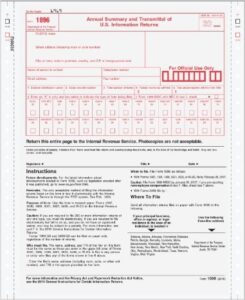
Dan Myers, who owns a gaming company, is “obsessed” with his cash flow document and painstakingly goes through every line item himself. “It keeps you from overspending on things you don’t need,” Myers says. Use some type of spreadsheet system to effectively manage your cash flow.
- Instead of buying more of what doesn’t sell, get rid of it—even if you need to sell it at a discount.
- Otherwise, it won’t be a true reflection of your monetary situation.
- Negative cash flow from investing activities might be due to significant amounts of cash being invested in the company, such as research and development (R&D), and is not always a warning sign.
- Invoice finance and asset-based lending is especially useful if customers are slow in paying their bills.
- Reassuring customers, handling suppliers, and managing staff working from home is essential, but so is ensuring that your financial reporting is up to date.
If you don’t have outstanding accounts receivable but want additional financing to increase your cash flow, cash-flow loans could be an option. Cash-flow loans are short-term, often high-interest loans or lines of credit offered by online lenders. You shouldn’t rely on cash-flow loans for typical expenses such as rent and payroll. Reserve them for expenses that will ultimately increase your business’s revenue, such as a marketing campaign or a new piece of equipment. Cash flow is the money coming into and going out of your business, tracked are salaries fixed or variable costs on a cash-flow statement.
Cash Flows From Investing (CFI)

For example, say Hana Enterprises ships $50,000 worth of security products to customers in January, along with invoices that are due in 30 days. The company will have $50,000 of revenues for the month but won’t receive any cash until February. On paper, the business looks healthy, but all of its sales are tied up in the accounts receivable.
Cash flow management: A guide for business owners
But if she does five inventory turns a year, she will only have $100,000 in cash tied up in inventory at a given time, freeing up more cash. But maintaining positive business cash flow isn’t easy; many entrepreneurs struggle with it, according to research by the Federal Reserve Banks of New York, Atlanta, Cleveland and Philadelphia. In some situations, a cash-flow loan bookkeeping vs accounting: whats the difference may be the solution to a cash crisis, but that’s not always the case. The most effective way to track your company’s cash flow is through a cash flow statement (or report). Business credit cards can offer a comfortable cushion when your business is running low on immediate cash, offering flexible credit limits and potential rewards.
Companies with strong financial flexibility fare better, especially when the economy experiences a downturn, by avoiding the costs of financial distress. Keep a record of all payments, bank statements and bills from all customer sales. Annual percentage rates for invoice financing products range from about 11% plus the prime rate to 64%. In this article, we will share 10 practical tips for managing your business’s cash flow.
What Is the Difference Between Cash Flow and Profit?
Keeping track of your cash position is significant and fundamental to keeping your company afloat. If not, the full amount will be due by the end of the 30-day credit term. Equity financing requires you to sell a portion of your company to an investor in exchange for funding. Cash flow management is a vital — yet often unsung — aspect of running a business.
You can incentivize customers to pay their bills by offering discounts if they pay ahead of time. Use last year’s bank statements as a checklist while anticipating new incomings and outgoings for the next 12 months, based on internal and external factors. Ideally, you should be aiming for a consistent positive cash situation—in other words, more money coming into the business than is being paid out. Your challenge is to manage the money coming in (accounts receivable) with the money going out (accounts payable). It’s not free receipt forms uncommon for a business to experience a cash shortage, even when sales are good. This usually happens when customers are allowed to pay after the product or service is delivered.
It is calculated by taking cash received from sales and subtracting operating expenses that were paid in cash for the period. Look at frequent communication with customers and suppliers, regular checks on market trends, and analysis of past sales. In a nutshell, invoice or accounts receivable financing enables you to use your unpaid invoices as security for a loan. You pay a percentage of the invoice amount to the lender as a fee for borrowing the money. Hana Enterprises has several options to avoid this shortage in March. When faced with cash flow challenges, exploring financial options can provide much-needed relief.



